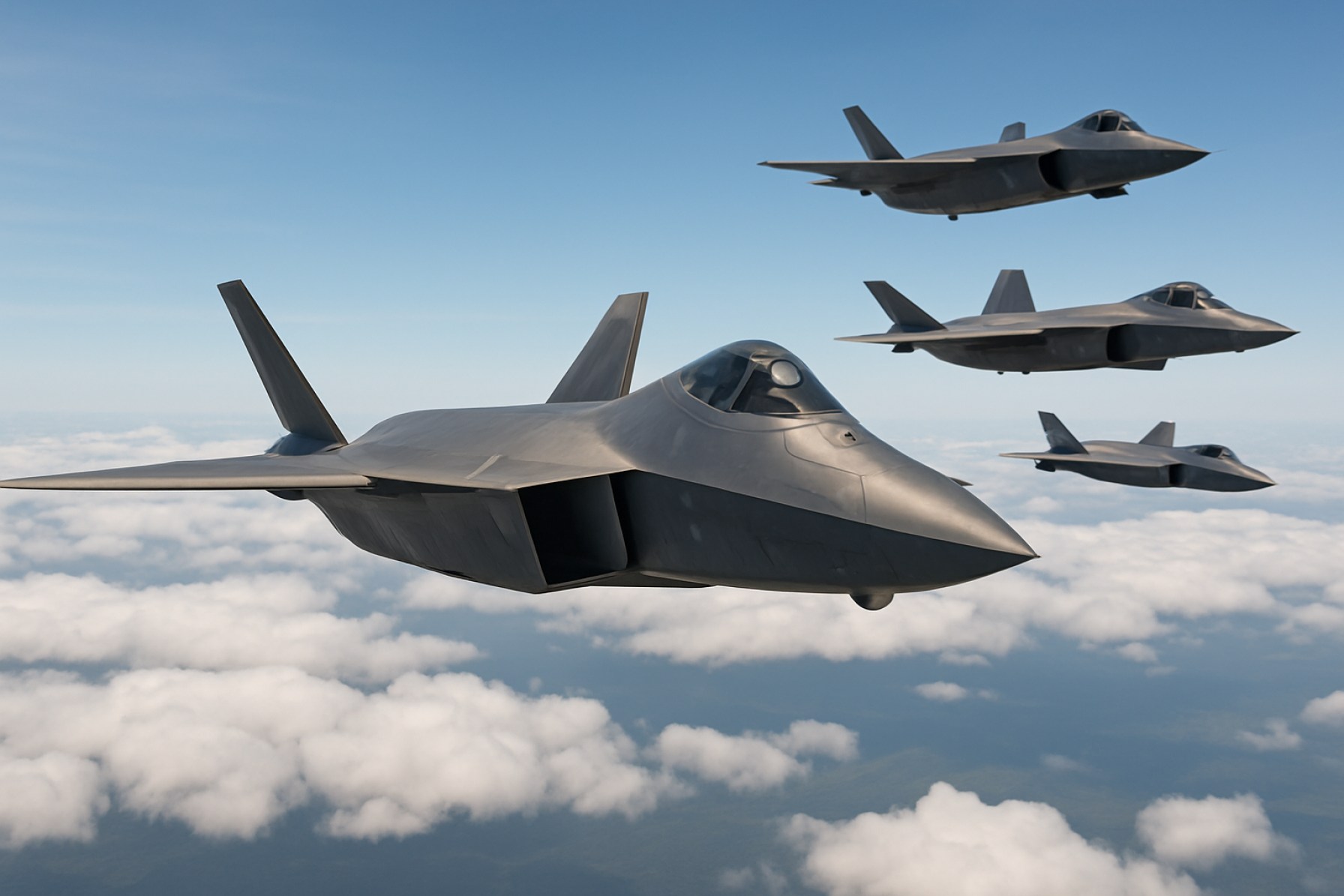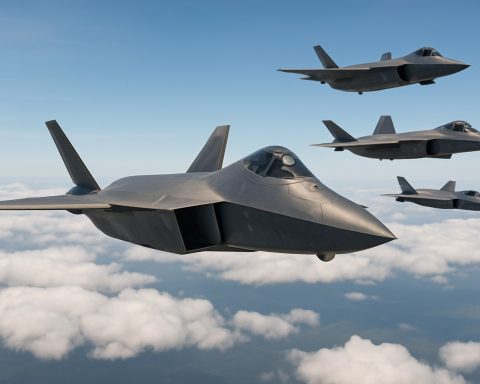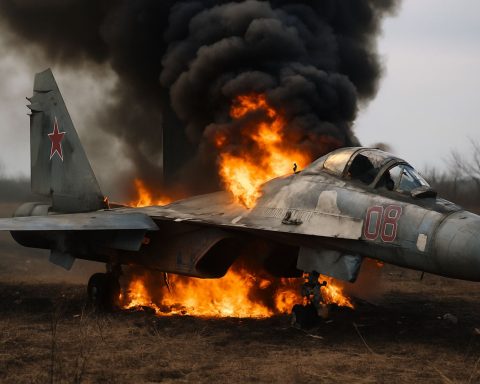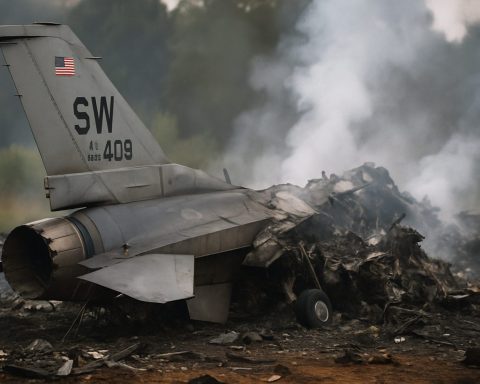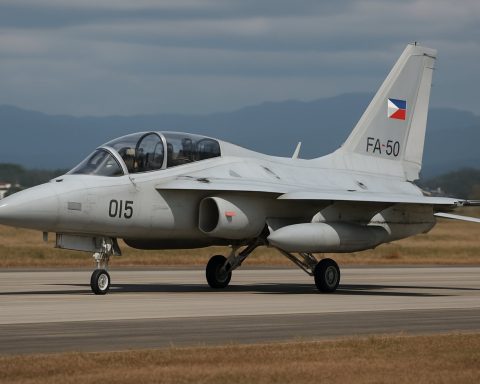Why New 6th-Generation Fighter Jets Will Change Warfare Forever — Here’s How US, China, and Europe Are Battling for the Skies
Sixth-generation fighter jets are set to revolutionize air combat with stealth, AI, and next-gen power. Discover what’s coming in 2025 and beyond.
- 3+ nations (US, China, Europe) lead the sixth-generation fighter race
- Mach 2+ top speeds, up to 1,700+ mile combat radii
- AI-driven command centers for manned & unmanned missions
- Entry to service: As soon as 2028–2035
A silent revolution is underway in military aviation, promising to rewrite the rules of air dominance. Sixth-generation fighter jets are no longer the stuff of science fiction—in 2025, the world’s biggest powers have locked in a high-stakes race to control the skies with sleek super-planes that think for themselves.
What Makes 6th-Generation Fighters So Game-Changing?
Forget the classic dogfight—these new jets are smarter, stealthier, and deadlier. Instead of pure speed, sixth-gen fighters rely on next-level stealth, longer range, and powerful networking with drones and satellites. Using advanced AI, they become hubs of real-time data, able to sense threats, assign targets, and plan missions faster than any human.
Militaries are betting big on “manned-unmanned teaming.” These jets don’t fly solo; they coordinate swarms of autonomous drones, ground assets, and even satellites. The line between pilot and programmed intelligence is blurring, propelling global air power into uncharted territory.
Q: How Did We Get Here? The Generations Explained
After WWII, fighter jets evolved rapidly. From simple jets (like the F-86 Sabre) to radar-packing interceptors, then multi-role machines with digital guts. The 2000s brought “invisible” fighters like the F-35. But today’s sixth-gen aircraft—think the US F-47, China’s J-36, and Europe’s GCAP Tempest—shatter every prior limitation.
Each leap brings a new balance of power. Now, stealth and AI are the battlegrounds, according to defense experts.
How the US, China, and Europe Stack Up: The Main Contenders
- USA’s F-47 NGAD: Designed for total air dominance by 2030, the F-47 “Stealth++” combines Mach 2 speed with a 1,150-mile combat radius. Its AI-driven cockpit manages drones and electronic warfare, punching deep into contested airspace. Analysts predict it will outperform all existing jets in stealth and digital warfare.
- China’s J-36: China’s answer to American air power is a monster: about 75 feet long, weighing over 99,000 pounds and boasting triple engines for range and brute force. With a 1,725-mile reach deep into the Pacific and the ability to unleash barrages of long-range missiles, the J-36 fits China’s strategy of keeping rivals at bay far from its shores.
- Europe’s GCAP Tempest: Collaboration between the UK, Italy, and Japan, the Tempest will cross the Atlantic on one tank and deliver over 10,000 pounds of smart munitions. With integrated AI and “system of systems” networking, it aims for a 2035 deployment and will replace the Eurofighter Typhoon.
Each nation’s design reflects unique priorities—but all bet heavily on AI, next-gen stealth, and supremacy in information warfare.
Q: What Role Does AI Play in These Jets?
Sixth-gen fighters are essentially flying supercomputers. AI sifts through massive data streams, spots threats, and proposes or even executes counterattacks. In some scenarios, the AI handles everything but the trigger. This speeds up decision-making and avoids human overload on chaotic, multi-domain battlefields (DARPA).
AI also enables pilots to coordinate “loyal wingmen”—drone swarms that scout, jam, or strike targets as extensions of the main jet.
How Will 6th-Gen Fighters Shape the Future of Warfare?
These jets are not just new aircraft; they are vectors for an entirely new kind of warfare. With unprecedented connectivity, they can paralyze enemy defenses and reshape strategic doctrines. But the questions loom large: Who controls the AI? Could autonomous weapons spark new arms races or mistakes? The coming years will require new treaties—and trust.
Expect a future where speed is overshadowed by sensor fusion, digital disguise, and machine teamwork. As rivals invest heavily, the risk of escalation may grow, yet collaborations like Europe’s Tempest prove that strategic partnerships are possible—even in a world hungry for technological advantage.
How to Track 6th-Generation Jet Development
- Monitor announcements from national defense departments and top contractors (Lockheed Martin, BAE, AVIC)
- Follow NASA and Boeing for crossover tech advances
- Watch for international arms shows (Farnborough, Zhuhai) for real-world unveilings
- Stay updated on treaties and ethics debates through UN and NATO newsrooms
Checklist: Are You Ready for the Future of Air Combat?
- Know the key sixth-generation players and their unique strengths
- Understand the role of AI and “manned-unmanned teaming”
- Track emerging strategic alliances and rivalries
- Follow the evolving debate on ethics and global stability
The sixth-generation fighter era starts now. Stay ahead—sign up for defense alerts, follow breaking tech, and join the conversation on the future of aerial supremacy.
